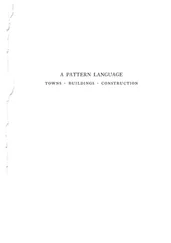The type of information collected by linguistic anthropologists might be quantitative or qualitative – or often both. Quantitative data can be counted; the researcher is investigating the quantities of something. 2A researcher might, for example, conduct a survey about people’s opinions and count how many feel strongly about a particular subject or measure the length of pauses in the utterances of different speakers. Qualitative methods, on the other hand, do not involve counting anything. Instead, a researcher who uses qualitative methods is interested in looking in-depth at some aspect of human behavior in order to understand it more deeply, often from the perspectives of the people being studied. For instance, linguistic and cultural anthropologists often live for long periods of time in the communities they are studying in order to observe and participate in daily life, thereby learning about and absorbing as many of the details of cultural norms and social practices as possible.
Many linguistic anthropologists advocate “triangulating” the data – that is, using multiple methods in order to gather different kinds of data in an attempt to obtain a fuller picture of the multimodal phenomena under study. Some of the most commonly employed research methods in linguistic anthropology are described below. This is just a partial list of the many different research methods used by linguistic anthropologists. Whatever methods linguistic anthropologists draw upon, however, their main goal is to gather information about language use in actual social contexts.
One of the most widely used research methods in linguistic anthropology is known as “participant observation” and is shared with cultural anthropology as well as other fields that engage in ethnographic research. 3In fact, most linguistic anthropologists consider participant observation to be an essential method for their research. (The reasons why this is so should be evident after reading in Chapter 1 that linguistic anthropologists consider language to be inextricably interwoven with social practices.) Participant observation requires linguistic anthropologists to spend months or years residing in a particular community (or set of communities, in the case of multi-sited ethnographic research), during which time, they become fluent in the local language(s), if they are not already, and become extremely familiar with local social norms, cultural meanings, and linguistic practices. Scholars who conduct participant observation take copious notes, called fieldnotes, while participating in an event or taking part in an interaction, or as soon as possible afterwards. This sort of intensive, in-depth immersion in the group or groups being studied can provide essential insights and build important rapport with research subjects. 4
Linguistic anthropologists, like many other social scientists, not to mention journalists, public opinion pollsters, market researchers, social workers, and others, often make use of interviews to gather information. The types of information requested vary widely, as does the format of the interview, which can be structured (with a list of questions asked of all research subjects in the same order), semi-structured (with a list of general areas the researcher would like to discuss, but no strict order or wording), or open-ended (informal conversations designed to elicit topics of importance to the research subjects themselves). Sometimes all of these types of interviews are used at some point during a research project.
Linguistic anthropologists may use interviews to gather general background information about cultural norms and social practices in their research communities, and/or they may conduct interviews to ask people’s opinions about various linguistic usages. Linguistic anthropologists might also seek out individuals to help them understand the meanings of particularly important and complex words and concepts. Those scholars working on endangered languages that have never before been studied or perhaps even written down must work closely with speakers of these languages to document as much of the grammar, vocabulary, verbal art, and social contexts of language use as possible before the languages become extinct. 5
No matter what the content or format of the interviews conducted, however, most linguistic anthropologists do not treat interviews as transparent – as linguistic data they can reach “through” to get to the “facts.” Instead, they recognize the importance of analyzing the interview context itself. Linguistic anthropologists strongly maintain that meanings emerge in specific social interactions, and interviews are no exception. As Charles Briggs (1986, 2007) has repeatedly reminded us, the interviewer is a co-participant in the interaction, and this can have an enormous effect on what is said, how it is said, and why it is said. For a scholar to gloss over or omit this aspect of the interview entirely when writing about it is, at best, to miss an opportunity to enrich the analysis and, at worst, to fail to understand the significance of what the interviewee was (or was not) saying.
Thinking back to Jakobson’s model of the multiple functions of language, the “referential” function – that which communicates information about the world – is just one of six functions of language. Interviews should not, therefore, be reduced to this function alone. In addition, since meanings are conveyed through multiple modalities, as we discussed in the previous chapter, the interviewer should videotape or at least audiotape the interaction whenever it is logistically and ethically feasible to do so. This will facilitate a more nuanced analysis during the write-up phase of the research.
It is extremely important to remember, however, that in many societies, the interview is not the preferred way of communicating information – if it is a speech genre familiar to the interviewees at all. A researcher who attempts to use interviews in such a society will either obtain mistaken information or no information at all. For this reason, Briggs (1986:93) strongly encourages researchers in all fields (not just linguistic anthropology) to “learn how to ask” in culturally appropriate ways by paying close attention to how people in the community use language in all sorts of situations. Briggs (2007) also urges us all to become more aware of how the ideas people express in interviews circulate in many different venues – in scholarly articles and books, informal conversations, and the mass media, for example.
In sum, as important as the interview is as a research method, it is often mistakenly assumed to provide a simple, straightforward path toward “the facts” or “the truth.” Interviews can indeed provide rich insights, but they must be appreciated as the complex, culturally mediated social interactions that they are.
Surveys and Questionnaires
Closely related to interviews are surveys and questionnaires, which are often employed to collect demographic data such as age, education level, languages spoken, income, and so on. Sometimes, respondents fill out the survey or questionnaire themselves; other times, the researcher or a research assistant goes through it with the respondent item by item. These research instruments can be used to collect information about opinions, experiences, or beliefs. Respondents might be asked, for example, “On a scale of 1 to 5, how much do you agree with the following statements?” Or, “How many hours per day on average do you watch television?” Or, “List the first five adjectives that come into your mind when you think of your wedding.” Many of the same caveats that apply to interviews also apply to surveys and questionnaires, but they can provide valuable perspectives on some topics.
Читать дальше












